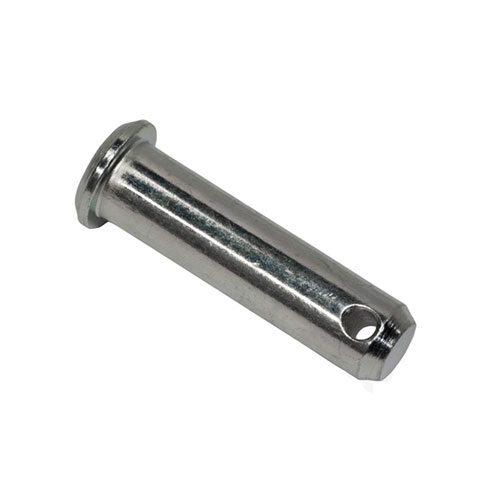How Material Selection Impacts the Performance and Longevity of Automotive Pin Fasteners
Choosing the right material for automotive pin fasteners is far more than a matter of cost—it's a critical design decision that influences strength, durability, corrosion resistance, and compatibility with surrounding components. In automotive applications where pins are often subjected to dynamic loads, vibration, and harsh environmental conditions, the wrong material can lead to premature wear, joint failure, or unexpected maintenance issues. For engineers and procurement teams aiming to ensure both reliability and cost-efficiency, understanding the material science behind pin fasteners is essential.
Among the most commonly used materials for automotive-grade pin fasteners are carbon steel, stainless steel, and alloy steel. Each offers unique mechanical properties that suit different use cases. Standard carbon steel pins are widely used due to their excellent strength-to-cost ratio, but they often require additional surface treatments to resist rust and surface degradation. Stainless steel variants, particularly 304 or 316 grades, offer superior corrosion resistance, making them a strong candidate for applications exposed to moisture, road salts, or high humidity—conditions common in underbody assemblies or door hinge systems.
Alloy steel, especially when heat-treated, provides exceptional hardness and fatigue resistance. This makes it a preferred material for pin fasteners used in high-load or high-motion areas such as suspension systems and steering linkages. However, this strength comes with trade-offs in cost and machinability. Choosing between these materials involves balancing performance needs with manufacturing complexity and price points. For many OEMs and Tier 1 suppliers, this balance defines the overall success of the component within the broader assembly.
In addition to base material, surface treatments play a significant role in enhancing the performance of automotive pin fasteners. Zinc plating is frequently used to provide basic corrosion protection, especially for carbon steel pins. Phosphate coatings can offer additional wear resistance and better oil retention, which is beneficial in moving joints. More advanced treatments like nitriding or PVD coatings may be selected when increased hardness and wear protection are required without altering the dimensions of precision-ground pins. These surface technologies not only extend lifespan but also improve assembly performance by reducing friction and galling during installation.

Another consideration is the interaction between pin materials and the parts they connect. Galvanic corrosion can occur when dissimilar metals are in contact in the presence of an electrolyte, such as road spray or engine fluids. This is especially relevant when pairing stainless steel pins with aluminum or zinc-alloy components. Understanding these electrochemical relationships is part of why experienced manufacturers can offer significant added value during the design consultation stage. When we produce pin fasteners, we don’t just match specifications—we help customers avoid hidden problems that show up long after assembly.
Temperature performance is also a critical factor that affects material selection. In applications near engine compartments or exhaust systems, thermal expansion and heat resistance become primary concerns. Not all pin materials maintain their properties across wide temperature ranges. For instance, stainless steel retains its mechanical strength better than mild steel at elevated temperatures, which helps maintain hinge integrity and joint function during thermal cycling. This kind of application-specific material knowledge ensures fasteners do their job reliably across the life of the vehicle.
While off-the-shelf options serve many standard needs, customization becomes necessary when design tolerances, mechanical loads, or environmental challenges exceed typical conditions. As a manufacturer with years of experience in supplying high-performance automotive pin fasteners globally, we understand how critical the right material choice is from both a performance and cost perspective. We work closely with engineers and buyers to tailor solutions that meet technical specs and long-term reliability requirements, without unnecessary overengineering.
Ultimately, the material behind a pin fastener is more than just metal—it’s a quiet contributor to vehicle safety, serviceability, and durability. By paying attention to this often-overlooked component, automotive professionals can unlock better performance at the system level. Whether you're optimizing for cost, longevity, or mechanical strength, the right combination of material and finish is key to making a good fastener great.
And Get A Free Consultation!

 English
English 中文简体
中文简体

